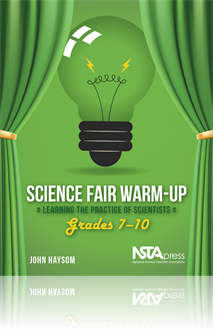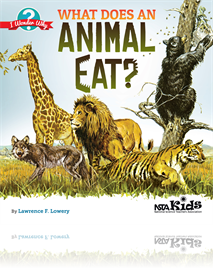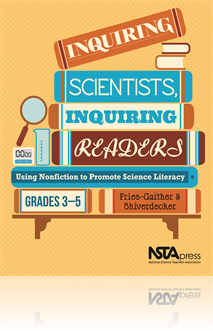All Book Chapters
Book Chapter
Generating Ideas for Projects: Ideas All Around You
Some of the best science fair projects can be found right in the world around you. These projects are found when you start looking at cooking, gardening, and TV commercials from a scientist’s perspective. The best way for brainstorming ideas is to...
Book Chapter
Science fair projects are about real problems that you choose to explore. The problems are challenging and fun. The best way to find out what science fair projects are all about is to do a project and take it to a science fair. This chapter provides ...
Book Chapter
The wing of a bat, the bone in your leg, the stem of a plant—all have elegant, elaborate structures. Scientists would like to understand how and why these structures developed and engineers are also concerned with developing an understanding of str...
Book Chapter
Science Without Numbers: Searching for Patterns
Searching for patterns is often the very beginning of sense making. We do it all the time. Scientists try to find patterns in their observations, then understand how these patterns are connected. For example, the way you go about cracking a code is s...
Book Chapter
The Numbers Game: Designing Your Own Measures
Have you ever wondered how people managed before the ruler and the clock were invented? Today, scientists use the metric system of measurement—one based on the meter, kilogram, and second. It is a decimal system. To measure length, normally a ruler...
Book Chapter
Experiment Design: Preparing Experimental Designs
This chapter focuses on turning cooking into a science. A cookie recipe is shared with students along with a list of questions to consider. Students are also invited to develop the recipe. If scientists were given a recipe to develop, they would t...
Book Chapter
Sources of Error: Sampling: An Introduction
Sampling is a technical matter—it has to be planned carefully. The accuracy and reliability of the results are calculated using statistics. For example, the connection between high salt consumption and high blood pressure was established using stat...
Book Chapter
Making Sense of Your Results: Interpreting Graphs
Graphs can tell a story and are like a silent interpreter. They give meaning to numbers and turn numbers into pictures, but words still need to be input. This chapter presents the case of the bean seed planted in a glass jar so that growth is visible...
Book Chapter
Explanations: Deepening Your Understanding: Analogies and Models
This chapter highlights the project—“The Right Nail for the Right Job”—and extends the understanding of the behavior of wood and nails. Scientists often use analogies to extend their understanding. Analogies help to “see” things in an ext...
Book Chapter
Sharing Your Findings: Talking About Your Project
After finishing investigations or experiments, scientists frequently present their findings at a conference. If their presentations are well received, scientists are then encouraged to send the papers to scientific journals for publication so they ca...
Book Chapter
Judging Projects: Making Judgments
Scientists often put themselves in other scientists’ shoes to make judgments by saying “if I had been doing that piece of research, what would I have done?” Making judgments involves making such comparisons. In this way, scientists learn from o...
Book Chapter
Generating Ideas for Projects: Ideas From the Scientific Literature
Scientists keep in touch with one another by writing about their experiments in journals. These are the original sources of information that spread quickly to others through science magazines, newspaper reports, and television programs. Information i...
Book Chapter
Plant Biomass (Photosynthesis)
The purpose of this activity is to help students understand the synthesis and source of plant biomass, as well as the process of photosynthesis. This activity also helps students learn how to engage in practices such as using planning and carrying ou...
Book Chapter
This sample from, What Does an Animal Eat? offers insights into two special aspects of hungry animals: how their teeth and beaks offer clues about what they eat and how the food chain helps make sure there’s enough for all. ...
Book Chapter
The Science-Literacy Connection
There has been much talk about integrating science and literacy instruction in recent years. Why this focus, particularly in the elementary classroom? One very practical reason is to make time in a crowded curriculum. Teachers are confronted with the...






